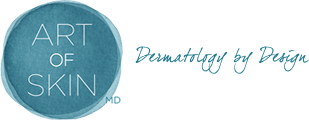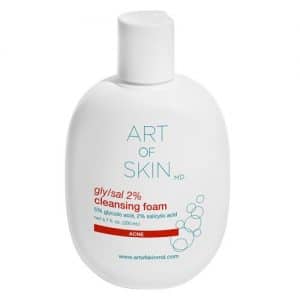Blackheads are a form of non-inflammatory acne called “open comedones.” Basically, a mix of sebum (oil) and skin cells get caught in the pores and oxidize, forming the characteristic brown–black color of comedones.
Number one rule when you have a blackhead is don’t pick at it! If you pick a blackhead, the area around the hair follicle and oil gland may get inflamed. This inflammation or trauma, the mix of sebum or skin cells, and the presence of a bacteria called P. acnes can cause non-inflammatory acne to become inflammatory. Inflammatory acne is characterized by redness, tenderness and cystic lesions. Inflammation in the area can lead to pain, unsightly acne cysts and in the worst-case scenario, it can cause scarring. Basically, you don’t want to stoke the fire of a well-behaving blackhead and create an inflamed and far worse situation.
If you simply couldn’t resist picking, and you are left with inflammatory acne, consider using a salicylic acid topical such as a cream or wash. The beta hydroxy acid penetrates down the hair follicle and oil gland where blackheads start. Salicylic acid helps to remove the sebum and debris that comprises a blackhead and helps heal post-inflammatory discoloration and inflammation resulting from picking a blackhead. Try this Gly/Sal wash we offer at the clinic, which also comes in easy-to-use pads for patients on the go. It’s part of a line we have specifically designed for acne-prone skin.
Another option that will be available over-the-counter in the next year will be adapalene gel (brand name Differin). This is a prescription-strength retinoid in the same class as Retin-A. This group of vitamin A derivatives helps normalize how skin within the hair follicle sheds and treats all forms of acne – blackheads, whiteheads, inflammatory acne, cysts and post-inflammatory pigmentation. Applying this cream to areas prone to blackheads helps eliminate them over time.
If blackheads are removed atraumatically, using a special tool called a comedone extractor by a professional, very little healing time is needed – the skin might be slightly tender or pink for a few hours to a day or so. If the blackhead has been too traumatized and becomes an inflammatory acne lesion, it can become red, swollen and may require days or even weeks to fully heal.
Blackheads by definition are non-inflammatory and should not cause scarring. However, long-standing blackheads can enlarge, creating dilated pores over time. Of course, the best option is to prevent blackheads or further irritation of your skin. To do this, avoid any oil-based skincare and makeup as well as products that are not labeled “non-comedogenic.” These products may exacerbate existing blackheads and could also cause more to form.
Over-the-counter products containing benzoyl peroxide, salicylic acid, glycolic acid, retinol and soon-to-be-released adapalene will all help to prevent blackheads and other forms of acne. If an acne lesion is even slightly red, it means inflammation is present and a scar is possible. It is important to treat inflammation early. Salicylic acid peels and using a retinol or retinoid are the most helpful means of improving impending scars and preventing discoloration.
Many in-office procedures are available to treat impending scarring. IPL photofacials, nonablative lasers, such as Lumenis ResurFX, ablative lasers like carbon dioxide lasers, and radiofrequency microneedling devices can all actively help improve acne scarring.
Whether it’s blackheads, inflammatory acne or acne scarring, we are here to help! Call us at 858-792-SKIN (7546) to schedule a consultation today!


